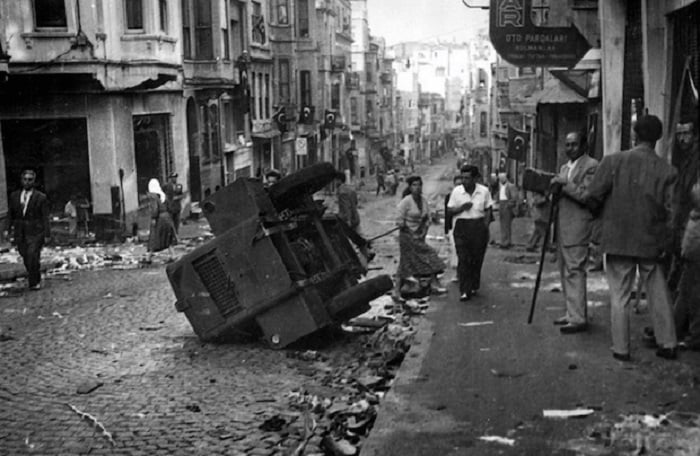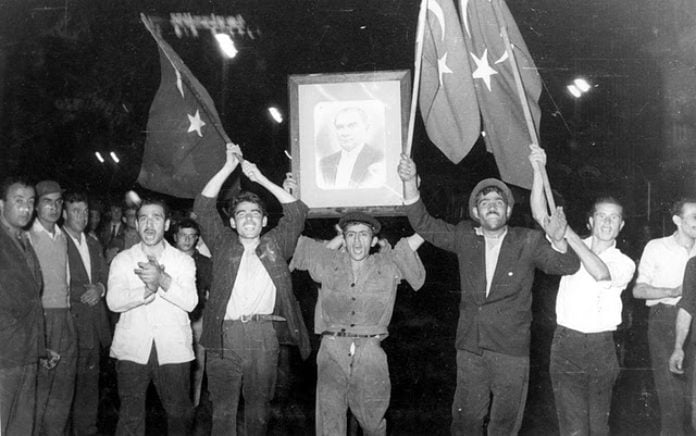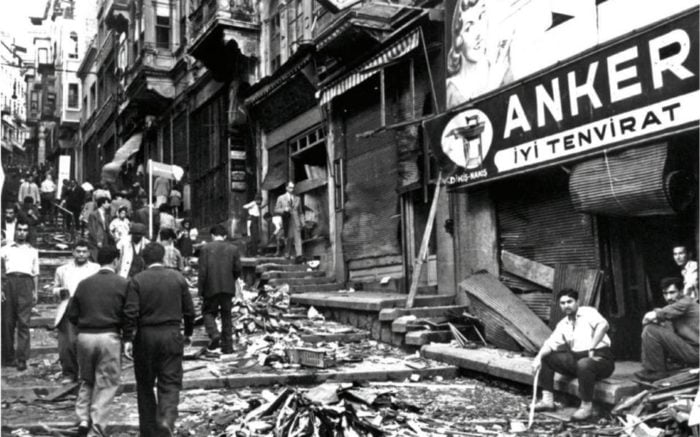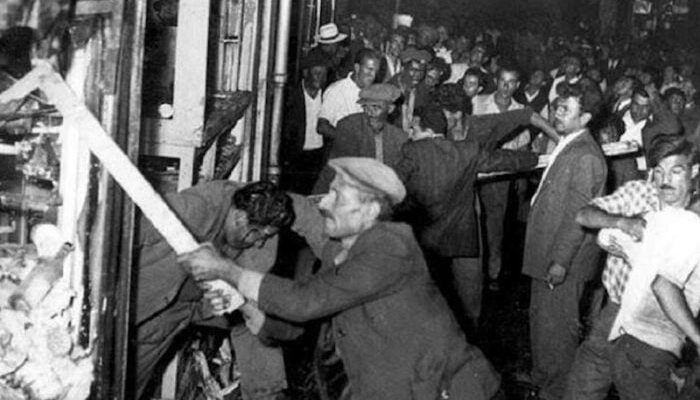
In 1955, the large Greek population of the Turkish city of Istanbul was victim to a heinous pogrom that resulted in the suffering and death of many and the destruction of countless homes and businesses.
The Greeks in Istanbul were a longstanding, thriving community comprised mostly of families of merchants. In 1955, their population was about one hundred thousand, and they were a prominent class in the city.
At the time, Turkish Prime Minister Adnan Menderes (1950-1960) sought to appeal to the conservative religious faction of the Turkish population, causing irritation in the country’s secular Kemalist establishment. The thousands of mosques built during his time as PM are proof of this.
At the time Istanbul, and Turkey as a whole, was not as prosperous as the Greeks.
Additionally, nationalist fever in the country was rising, as the Greek-Cypriots demanded their union with Greece. The rich Greeks of Istanbul were the perfect scapegoat.
It was a good occasion for the Turkish leaders to distract the public from its problems, turning it against the prosperous Greek minority. On August 28, 1955, Menderes publicly, and falsely, claimed that the Greek-Cypriots were planning massacres against the Turkish-Cypriots.

Pogrom result of resentment, discrimination
In essence, Prime Minister Adnan Menderes decided to turn his people against the prosperous Greeks, blaming them for all the woes of the Turks, much like Hitler had turned most Germans against the prosperous Jewish communities in Germany in the mid-1930s.
Terror unleashed against the Greek community of Istanbul over two days beginning on September 6, 1955 in much the same fashion as Nazi Germany’s Kristalnacht.
The Pogrom, or violent riot aimed at a particular ethnic group, against the Greeks of Istanbul broke out on September 6, 1955 after reports circulated that Greeks planted a bomb at the Turkish Consulate in Thessaloniki, which is housed in the residence where Kemal Ataturk, the founder of the modern Turkish state, was born.
The perpetrator of the bomb was a Turkish usher at the consulate named Oktay Engin, who was arrested by Greek authorities.
Turkish media was silent about the arrest and continued to push the idea that it was a Greek who set off the bomb.
Engin later became a hero in Turkey. He was honored in Turkey and appointed provincial governor.
Years later, in an interview with the Greek newspaper Eleftherotypia, Engin denied any connection with the incident and considered himself a victim of Greek authorities.

The blast at Ataturk’s home caused only minor damage to the building’s windows, but Turkish newspapers took advantage of the situation.
Following government instructions, they magnified and distorted the event. Headlines such as “Greek terrorists destroyed Ataturk’s paternal home” of the Istanbul Express and the publication of a series of fake photos of the incident sparked “spontaneous” demonstrations in Taksim Square in the afternoon of the same day.
The brutality and destruction
At five o’clock in the afternoon, a raging crowd of fifty thousand people turned against the Greek properties in the Pera district.
The looting lasted until the morning hours of September 7th, when the army intervened, as the situation was in danger of spiraling out of control.
Until then, the authorities remained apathetic. Menderes’ Democratic Party, which controlled the unions, played a catalytic role in the rioting.

Large numbers of protesters were transported to Istanbul from West Asia Minor for free to take part in the pogrom against the Greek community.
Four thousand taxis transported them to the scene of the riots while trucks of the Municipality of Istanbul were deployed in parts of the city, loaded with axes, shovels, bats, pickaxes, hammers, iron crowbars, and petrol cans, necessary tools for the mob that attacked the Greek stores.
They shouted slogans like “death to the giaourides (faithless)” and “break it, tear it down, he is giaouris.” “Slaughter the Greek traitors” and “down with Europe” were other common slogans and many shouted about “[marching] against Athens and Thessaloniki.”
Although the rage was directed against the Greeks, the anger of the mob did not spare shops owned by Armenians and Jews.
Men and women were raped, and according to the testimony of the famous Turkish writer Aziz Nesin, many priests were forced to be circumcised, with one of the victims being an Armenian priest. Sixteen Greeks lost their lives and thirty-two were severely injured.

Violence against the Greeks took place not only in Istanbul but also in Izmir, or Smyrna. On the morning of September 7th, Turkish nationalists set fire to the Greek pavilion at the Izmir International Fair.
They then destroyed the newly built church of Agia Fotini, while looting the homes of Greek soldiers serving at NATO Headquarters.
The world remained silent about the pogrom
The Papagos government tried to make the issue known internationally but without any significant results.
The Americans and the British were unwilling to pressure Turkey, a valuable ally during the Cold War. NATO allies advised Greece to forget about the incident.
Only the World Council of Churches from international organizations demanded an explanation from Turkey for the destruction of ninety percent of the Orthodox churches in Istanbul.
However, in August 1995, the U.S. Senate called on President Clinton to declare September 6th Pogrom Remembrance Day.
The Pogrom against Hellenism in Istanbul resulted in the death of sixteen Greeks and the injury of thirty-two, the death of one Armenian, the rape of twelve Greek women, and the rape of an unspecified number of men, but the real numbers could be much higher.
Furthermore, the rioting caused the destruction of 4,348 merchant stores, 110 hotels, 27 pharmacies, 23 schools, 21 factories, 73 churches, and about one thousand homes owned by Greeks.

The financial cost of the damages amounted to $150 million, according to international organizations while the Greek government estimated it at $500 million.
Economic destruction and fear forced thousands of expatriates to emigrate to Greece. Of the one hundred thousand Greeks who resided in Istanbul in 1955, only two thousand remain in the city today.
Later, the Turkish state, through President Celal Bayar, promised compensation for the destruction of Greek property. At best, reparations did not exceed twenty percent of the claims, given that assets had depreciated dramatically.
Many details about the September riots came to light in 1961 during the trial for the ultimate betrayal of ousted military Prime Minister Adnan Menderes, who did not escape the gallows.
The book of eminent Greek-American Byzantine scholar Spyros Vryonis, The Mechanism of Catastrophe: The Turkish Pogrom of September 6-7, 1955 and the Destruction of the Greek Community of Istanbul, (Greekworks.com, New York, 2005), is also a valuable resource on the subject.



